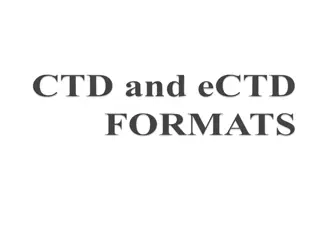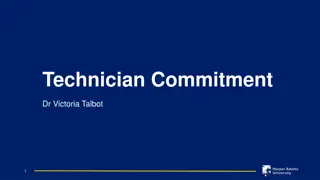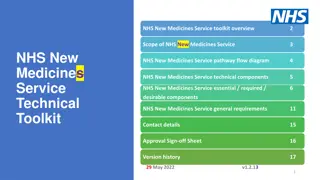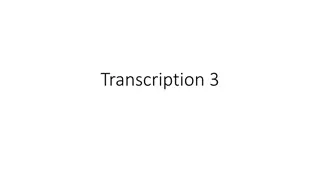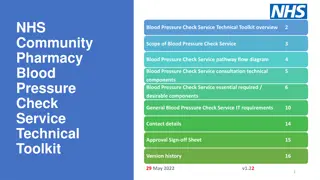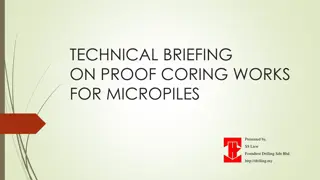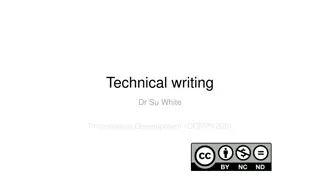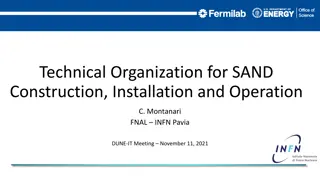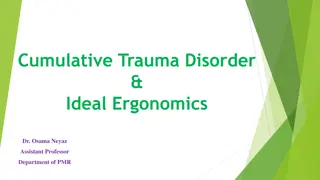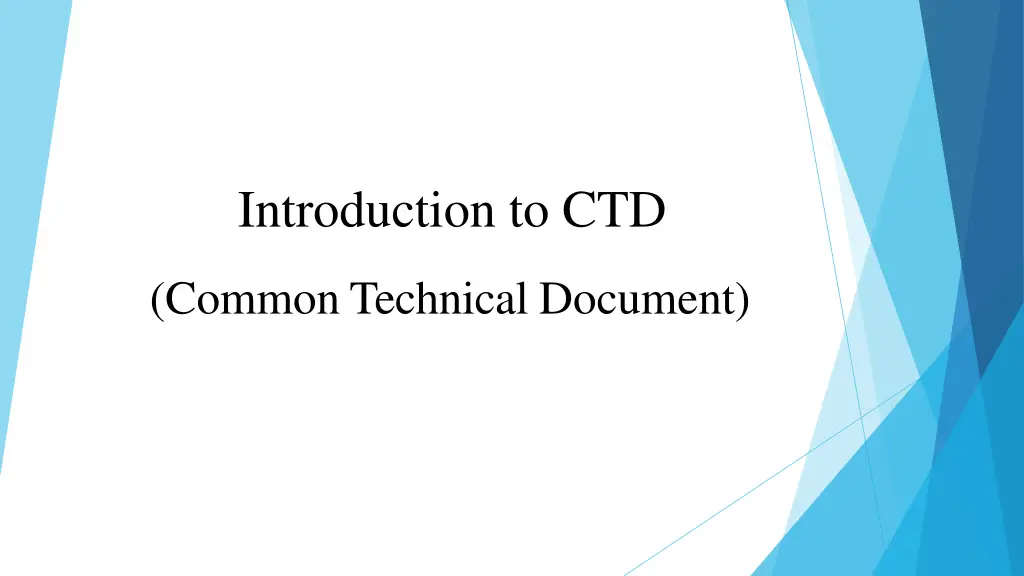
Understanding the Common Technical Document (CTD) Structure and Significance
Explore the Common Technical Document (CTD) - a joint effort of major regulatory authorities - and its significance in streamlining drug registration processes across different regions. Learn about the need, origin, overview, and modules of CTD. Discover how CTD revolutionized the submission of regulatory dossiers for marketing approval, enhancing efficiency and standardization in the pharmaceutical industry.
Download Presentation

Please find below an Image/Link to download the presentation.
The content on the website is provided AS IS for your information and personal use only. It may not be sold, licensed, or shared on other websites without obtaining consent from the author. If you encounter any issues during the download, it is possible that the publisher has removed the file from their server.
You are allowed to download the files provided on this website for personal or commercial use, subject to the condition that they are used lawfully. All files are the property of their respective owners.
The content on the website is provided AS IS for your information and personal use only. It may not be sold, licensed, or shared on other websites without obtaining consent from the author.
E N D
Presentation Transcript
Introduction to CTD (Common Technical Document)
Table of Contents: Introduction Need of CTD Origin of CTD Overview of CTD Modules of CTD Significance of CTD Impact of CTD References
CTD (Common Technical Document) CTD is a joint effort of 3 major regulatory authorities. 1. European MedicineAgency (EMEA, Europe, EU) 2. US-Food and DrugAdministration (FDA) 3. Ministry of Health, Labour and Welfare (MHLW, Japan) Canada and Switzerland has also adopted CTD.
Need of CTD Prior to implementation of CTD three major regulatory authorities EU, USA and Japan has their own set of guidelines and procedures for the submission of the regulatory dossiers to get the marketing approval of the drug. Some countries in EU also had their internal guidelines and formats which making the dossier submission in different countries a very time consuming and repetitive process. Keeping in view all the complication, the representatives from these authorities designed a common set of guidelines, format and contents for the drug registration in all the three regions under the same umbrella of ICH.
Origin of CTD ICH In July 2003, the CTD became the mandatory format for new drug applications in the EU and Japan, and the strongly recommended format of choice for NDAs submitted to the FDA. EWG Status of CTD Guidelines were presented in Nov 2000, in 5thICH Conference in San Diego. Implemented in May 2001 in ICH meeting in Tokyo Guidance made available to industry in October16, 2001 by FDA. CTD
Overview of CTD: 1 2 3 4 All modules are harmonized except Module-1 (Region Specific) The agreement to assemble all the Quality, Safety and Efficacy information in a common format (called CTD - Common Technical Document ) for submission of drug application for human use to get marketing approval in different ICH regulatory authorities. It s not the Global Dossier CTD incorporate ICH Guideline It is organized into five modules
The CTD format consists of 5 modules Module 1 :is region specific not part of the CTD. (Module 2 to 5 is a common format for the 3 ICH regions and Canada) Module 2: consists of AQuality, non clinical and clinical summary and nonclinical and clinical overviews Module 3: detailed information on quality Module 4: information on nonclinical study reports (safety) Module 5: info on clinical study reports (ICH guideline defines the format for these reports) Summaries: provide factual cross-study analyses and integration of results (comparisons and analysis of results across studies) Overviews: are discussion documents on critical issues (identifying unresolved issues or limitations encountered during clinical and non-clinical studies. Overview should explain why this drug should be marketed in Canada.
Module 1 (Administrative / General Information Documents specific to Region Application Form/ proposed label for use in region. Administrative Information FSC, COPP DML COAs Registration Certificates Form-29 etc
Module-2 (Common Technical Document Summaries) General Introduction to pharmaceutical, including: Pharmacological class Mode of action In general it should not exceed 1 page Proposed clinical use. Section of Module-2 M-2 contains summaries from Quality, Efficacy and Safety Section of the CTD: 1. CTDTable of Contents 2. CTD Introduction 3. QOS Details are discussed in : 4. Non-ClinicalOverview M4Q: The CTD-Quality- Module 3 M4S: The CTD- Safety- Module 4 M4E: the CTD- Efficacy-Module5 5. ClinicalOverview 6. Non-ClinicalSummaries 7. ClinicalSummary
Module 3 Quality This Section of CTD provide a harmonized structure and format for presenting CMC ( Chemistry, Manufacturing, Controls) information of the dossier Module 3 Contents: 3.1: Module 3 table of contents 3.2: Body of Data 3.3: Literature References
Module 3 Cont... 3.2. 3.2.S. 3.2.S.1. 3.2.S.1.1. 3.2.S.1.2. 3.2.S.1.3. 3.2.S.2. 3.2.S.2.1. 3.2.S.2.2. 3.2.S.2.3. 3.2.S.2.4. 3.2.S.2.5. 3.2.S.2.6. Body of Data DRUG SUBSTANCE General Information (Name, Manufacturer ) Nomenclature( Name, Manufacturer) Structure (Name, Manufacturer) General Properties Manufacturer of Drug Substance (Name, Manufacturer) Manufacturer (Name) Description of manufacturing process and process controls Control of materials Control of critical steps and intermediates Process validation /Evaluation Manufacturing Process Development
Cont... 3.2.S.3. 3.2.S.4. 3.2.S.5. 3.2.S.6. 3.2.S.7. 3.2.P. 3.2.P.1. 3.2.P.2. 3.2.P.3. 3.2.P.4. 3.2.P.5. 3.2.P.6. 3.2.P.7. 3.2.P.8. Characterization of Drug Substance Quality Control of Drug Substance Reference Standard or Material Container Closure System Stability of Drug Substance Drug Product Description and Composition of Drug Product Pharmaceutical Development Manufacture of Drug Product Control of Excipient Control of Drug Product Reference standard or Material Container Closure System Stability of Drug Product
Module 4 Non-Clinical Study Report Contains Non-Clinical Study reports. Presented in the order described in M4-S ICH Guidance for industry. Literature References
Module 5 Clinical Study Report It explains clinical study reports Studies on human and related information Presented in the order described in M4-E ICH Guidance for industry. Literature References
Significance of CTD More reviewable applications Complete, well-organized submissions More predictable format More consistent reviews Easier analysis across applications Easier exchange of information Facilitates electronic submissions
Impact of CTD The ICH CTD represents one of the most ambitious and successful international harmonization activities undertaken It will significantly reduce time and resources needed by industry to compile applications for global registration.




